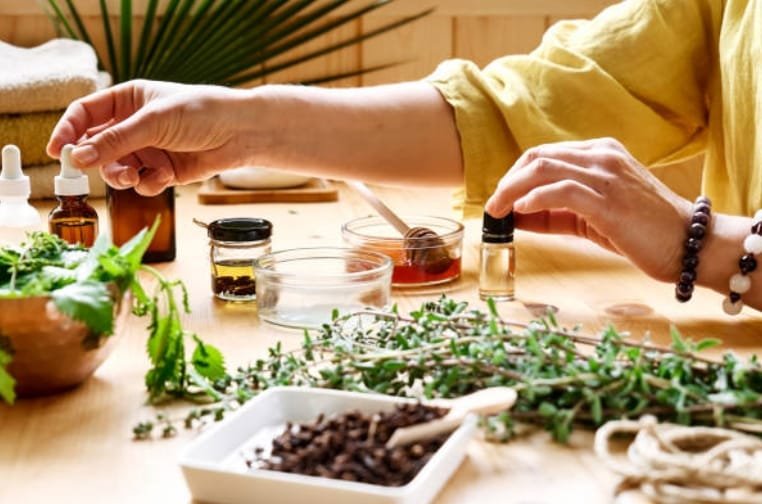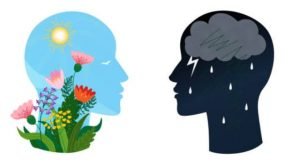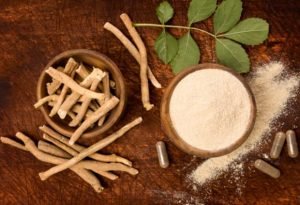
by admin | Jun 11, 2022 | Health
Ashwagandha – The Wonder Root
Indian Ginseng, also known as “ashwagandha” has long been known for being a potent, non-toxic plant. In ayurvedic medicine, ashwagandha is used to treat and alleviate a variety of conditions, but can also be used to improve overall health and longevity in generally healthy people. In this article, we’ll give you insights on this herb, its contents and how to supplement with it.
Let’s get to it!
What Does Ashwagandha Contain?
The thing about ashwagandha is that it contains a flurry of potent, active ingredients, such as:
- Alkaloids
- Steroid lactones
- Vitaminoids
All of these have active effects on the central nervous system, immune system, cardiovascular and respiratory systems, as well as the lymphatic system.
What Is It Used For?
In ayurveda (healthy lifestyle indian system), ashwagandha is classified as a “rejuvenating” ingredient. It is expected to improve health on both a physical and mental level, but also help the body renew cells and fight over diseases and conditions.
Due to its wide variety of active compounds, ashwagandha is used in the treatment of many diseases that affect health. A fun fact is that the latin name of the root is “Withania Somnifera” and that basically means “sleep-inducing” when literally translated.
That is to say that Ashwagandha can have a positive effect on your stress levels, helping you lower them.
How Is Ashwagandha Used?
In traditional Indian medicine, all parts of the plant are used as a part of the home-made remedy. There are a variety of ways to prepare the brew and you can even do so by brewing it in milk, to get rid of the unpleasant smell.
The studies and research done for ashwagandha, make it one of the best-known, proven to work herbs. All these studies point us to the conclusion that ashwagandha is potent for:
- Anti-Inflammation
- Immune Modulation
- Anti-Stress
Besides all of that, ashwagandha is known for having anticancer substances in the root extract. In Ayurveda, the ashwagandha brew is expected to improve overall health, longevity and quality of life.
Are There Side Effects?
This plant is generally considered safe when supplemented with in proper amounts. There is only one single documented case of intoxication, where a young woman developed thyroid intoxication symptoms, after increasing her intake.
Needless to say, everything in excessive amounts may be harmful, so consider your intake and current state.
Who Shouldn’t Take It?
Due to the nature of its active ingredients, there are certain instances when supplementing with ashwagandha is not recommended.
Make sure to advise with your doctor if you fall into any of the categories below
- Pregnant/lactating women
- People with thyroid disease
- People that already use prescribed medicine
What’s The Recommended Dose?
Ashwagandha is a plant, used in many formulations of supplements, so odds are you will stumble upon some of those products. Your best bet is to use the recommended dosage on the product label.
Nevertheless, if you are only using the plant’s extract, you can use 250-600 mg a day. This is a dose that has been proven to alleviate cortisol levels by up to 30%.
Conclusion
It is a fact that your protein, fats and carbs play a major role in your health, but the truth is that there is much more than just calories and macronutrients.
Finding certain plants and learning how to use them for their active substances, may be one of the most nourishing things you can do for the body.
Ashwagandha is a perfect example for such a plant, as it is viable for stress management, recovery, inflammation and a variety of conditions and diseases.
Try this root and see the benefits for yourself!

by admin | Jun 11, 2022 | Health
Healing herbs and plants for healthy digestion
One of the most frequent gastrointestinal issues is constipation. Many people suffer from this ailment without attempting to find a cure or a natural therapy. What they don’t realise is that they are only prolonging their suffering and aggravating their predicament. If given the option, home treatments for constipation can be adopted for their benefits and convenience.
The inability to pass a stool is known as constipation. Poor diet, according to experts, is the cause. Our food has a significant impact on our overall health, and if we don’t get enough important nutrients, our bodies will gradually stop functioning properly. As a Naturopath I can say wholeheartedly that hydration is absolutely key for maintain a healthy body mind, alongside managing stress levels. But to note that stress leads to dehydration and dehydration leads to further stress its very important to break that cycle and ensure calm and good hydration are optimum states of being.
Constipation is also caused by a lack of fibre in the body, which is needed to aid the digestive system’s functioning.
Many people ignore constipation, believing it to be a normal state. Can you believe some people will not go to the bathroom and pass a motion for days, even more than a week. Many people are unaware that this could be a sign of a more serious underlying illness, even one such as cancer. A medical examination is recommended to give an accurate prognosis. However, even if constipation is the only digestive condition, it is crucial to treat it. Our bodies require frequent bowel movements to eliminate wastes that have been collected over time. If constipation is not relieved it can lead to a very toxic dried out body, dried out cells and a great deal of imbalance. An impacted colon can also lead to a dangerous situation and twisting of the intestines which can be fatal.
It’s crucial to eat fibre-rich fruits and vegetables for healthier digestion. Drinking plenty of water to also aid stool softening. Thankfully most cases of Constipation can also be treated with a variety of herbal and home remedies.
Here are some examples for your reference:
1 Aloe Vera

You may be familiar with aloe vera’s usage as a topical treatment for sunburn, but it’s also a natural laxative. Aloe vera juice or gel capsules can be ingested daily. To get rid of constipation, mix 2 teaspoons of fresh aloe vera gel with fruit juice and drink the concoction.
Aloe vera has the potential to be a superfood. A gel comprising at least 75 nutrients, 20 minerals, 12 vitamins, 18 amino acids, and 200 active enzymes is put into the leaf. Aloe vera has various health benefits in addition to being an effective natural remedy for constipation. Here are a few examples: balancing acid and alkaline levels in the stomach, reducing gastric irritation, forming a lining throughout the colon to prevent toxic waste from entering the body. (and as an addition you can even use it to replace creams and lotions as a general moisturiser for dry skin, and so on.)
2 Flax Seed

Flax seeds have a large amount of fibre, which has a laxative effect and can help with mild to severe constipation. Add a tablespoon of ground flaxseed powder into your hot or cold breakfast cereal. You can also add flax oil to your morning coffee. For the optimal outcomes, mix them up to three times per day. Flaxseed is originated from the flax plant, which is a perennial herb. Flaxseed has a low carbohydrate content, making it appropriate for persons who avoid starches and sugars. Flaxseed can be found in various meals today, including crackers, frozen waffles, and oatmeal. Furthermore, a flaxseed-rich diet may prevent skin tissue from radiation damage.
Also make up flax or linseed tea, this will keep the body hydrated and the cells happy
3 Apple Cider Vinegar

Ok its from a fruit not a herb but hey its great J Apple cider vinegar has been used as a natural cure for various health issues, including constipation, for a long time. It is naturally acidic, and so for those with low stomach acidity, using ACV may help raise stomach acid levels to aid digestion. In theory, this could prevent gas and bloating, which a slow digestion can cause. It is also antimicrobial substance, and therefore may help kill bacteria in the stomach or intestines. Potassium, sodium, phosphorus, calcium, magnesium, copper, and fluorine are all found in apple cider vinegar and vitamins A, B1, B2, B6, C, and E bioflavonoid, and pectin.
Drink it
A capful in water in the morning, daily will help keep you regular.
Eat it
Apple cider vinegar is currently utilized in food as a salad dressing and to make pickles. It is frequently used in everyday life due to its significant effects in a variety of areas.
Weight loss
Apple cider vinegar has been used as a weight-loss aid for centuries, and studies have shown that it works! It works by breaking down fats so your body can use them instead of storing them.
Skincare
Congested bowels will often lead to congested skin so use it both internally and topically. Mix with water, to help clear congestion, help tighten and brighten skin. It can also help in the removal of freckles and dark spots. Apple cider vinegar is one of the most useful, inexpensive, and adaptable supplements for your general health and I recommend you make it a pantry staple.
4 Green Tea

The functionalgutclinic.com states ‘Consumption of green tea has been linked to improving gut health by populating healthy bacteria in the intestines. Research has been conducted in Ohio State University that has found evidence proving that green tea can encourage the growth of good gut bacteria, leading to a litany of benefits, including lowering the risk of obesity’. ‘A study by Yan and colleagues reveals that green tea is rich in polyphenols, helping the body improve its digestive process. To the uninitiated, polyphenols are digestive compounds found in the tea plant.
It’s no wonder green tea is such a popular ingredient in a variety of other health and wellness beverages. Pretty Me’s review of Lean N Green coffee highlights green tea as its main star, thanks to its ability to facilitate digestion. Regular consumption of green tea can help you ease the process of digestion, which contributes to the improvement of your gut health as well’
Clearly Green tea can be used as part of your general good gut health protocol. So in my humble opinion another pantry stapleJ Green tea, on the other hand, is a well-known herbal remedy for weight loss in everyday life so if you’re not planning on losing weight just drink in moderation, but it has a huge amount of other benefits too, so I wouldn’t stress too much. On the market nowadays, there are a plethora of green tea beverages.
Furthermore, because green tea is a rich source of strong antioxidants, it stands to reason that it could help you avoid chronic illness and it has been said that it may help to prevent cancer.
5 Prune Juice
Prunes are a sweet fruit with a deep flavour and a sticky, chewy texture that is delicious and beneficial. Another home treatment for rapid constipation relief is prune juice. In everyday life, prune is a pretty frequent fruit. If you’re suffering from constipation, try this simple home treatment right now.
Children, the elderly, and pregnant women are all susceptible to constipation. Many cultures worldwide have utilised herbs to treat constipation and gain and retain good gut health for thousands of years. It is one of the natural cures with high success rates. Let’s not forget good pre and pro biotics and also hydrate, hydrate, hydrate J and reduce stress!

by admin | Jun 11, 2022 | Health
Healing herbs for healthy skin
You’ve probably overheard people discussing natural skincare. Organic, Vegan, Cruelty free, Botanicals, but what is natural skincare, exactly? Well simply put, natural skincare is defined as using natural elements in skincare products, such as roots, essential oils, flowers, and herbs and for the most natural to avoid animals products and synthetics that my be harmful to our skin, our health, animals and the planet.
People are always looking for new skincare products, and a lot of interest in the planet and health has meant that natural skincare products have been increasingly popular in recent years. Many businesses are beginning to offer natural items to their clients, as part of doing their part for patient and climate but as entrepreneurs, this is also as an opportunity to make an ethical business.
Different degrees of natural

Even though the term implies natural, natural skincare products are not usually made entirely of natural components. The majority of them are made out of natural ingredients combined with natural preservatives, emulsifiers, and surfactants.
Therefore if you want to go completely naturally you need to seek out cruelty free, vegan, synthetic free, parabens free, soil association registered and many more labels. Because of the fact above, numerous people who have tried a natural skincare strategy have decided to produce their own products or to purchase from often small and local known ethical suppliers to ensure that they are only using natural items on their skin.
Names like Chamomile and Rose are popular skincare components since they have healing properties when used topically and appear in many cosmetics. You’ve probably heard of the benefits of carrots, cucumbers, and garlic too, but here are a few more herbs you may not be so familiar with.
Calendula

Even though the herb is a prolific and invasive growth in most gardens, the oil it produces is recommended to treat sunburn, small burns, and other skin inflammatory issues.
Oils – Poultices
Lycopene, a component included in the oil, aids in the healing and growth of healthy skin cells. Its blossom can be applied to the skin as a poultice or combined with olive oil. When constructing a poultice, wait until the consistency has cooled before applying the crushed steaming flowers to your skin.
Tea and Salads
Calendula can also be purchased as a loose tea and is great for the tissues of the body internally and externally. Calendula aids in the removal of toxins from the liver, resulting in radiant, healthy skin. To stimulate blood flow and assist the body to expel toxins through the skin, consume the leaves and flowers fresh in salads and rice dishes, or drink hot infusions.
Facial steam
To help shrink pores and clear acne, infuse the petals in a basic face wash or add them to a facial steam.
Head to Toe
To brighten fair hair, soak your tresses in a petal infusion or use it to relieve sore feet in a foot bath.
Chamomile
As referenced above, another plant you can grow in your garden is Chamomile. Chamomile is commonly used in natural skincare products for its soothing, smoothing, and healing effects. It works well for treating dermatitis and other skin irritations. Many skincare products incorporate it because it contains anti-inflammatory properties. It also contains antibacterial and fungicidal effects, similar to garlic.
Calming Skin and Sleepy Tea

You may have consumed Chamomile tea, sometimes people have it alone or with lavender to help them relax and sleep but it can also be applied to the skin as a compress as Its very calming in nature.
Removes Toxins
Chamomile tea induces sweating, which aids in removing toxins from the body, resulting in healthier and brighter skin.
Steam for Acne
To treat spots, use Chamomile in a facial steamer or rinse your skin with a Chamomile infusion to soothe, heal, and prevent acne scarring. Ensure your steamer or infusion is not too hot.
Bathing and haircare
Bathing with Chamomile teabags or loose tea or even a Chamomile oil softens and soothes sensitive skin. Try rinsing your hair with a Chamomile infusion to brighten and gloss your hair if you have blonde locks.
Flaxseed
Linseed is another name for flaxseed. It becomes a gel-like consistency when crushed and soaked in hot water and can be used as a compressor poultice. It’s a fantastic treatment for boils, sores, and a variety of other skin problems.
Linseed tea
You can also make linseed tea by putting a teaspoon of whole flax seeds in a flask of boiling water and steeping overnight. The next day drink the water it will hydrate your cells and you will see a great improvement in skin health over the weeks. The seeds can also be added to smoothies.
Horse skin care – Inside and out
If you work with horses, you’re probably aware that boiling linseed is a common addition to their diet for keeping them in good shape, especially during the winter months.
Purslane
Purslane is a plant that is high in Vitamin E. This means it aids in the health and suppleness of your skin. It can be steamed or boiled before eating, just like spinach. When reduced to a mash before applying to the skin, it can also be used as a poultice.
Sage
Sage is an excellent herb for calming the nervous system and boosting energy. Sage’s potent antioxidants can protect the skin from free radicals while also slowing the effects of ageing.
Facial steam for Acne
Use sage leaves in a facial steam to completely activate the herb’s antimicrobial effects if you have acne.
Oral skincare / tissues
Place 4-5 leaves in a cup of boiling water, cover, and steep for 5 minutes to make sage mouthwash. Swish this restorative mouthwash around your mouth once it has cooled.
Tea Tree Plant
Finally, tea tree oil is antibacterial and antifungal, similar to garlic. Tea Tree oil is effective in treating a variety of skin infections. It’s especially good at getting rid of toenail fungus.
Knowing a little about these herbs can hopefully help you choose a skincare product because many of them are utilised in cosmetics. It serves as a small guide to selecting a natural skincare product but please as always do your own research. There are far too many natural herbs and oils to list here, so many, such as rose, aloe vera, lavender, frankincense, nettle and many more, but that makes it all the more exciting that you can go and research online and in books, asks herbalists and naturopaths and you will find a wonderful array of natural healing options at your fingertips.
Closing note: Please remember to always consult a professional before starting any herbal or essential oils regime.

by admin | Jun 11, 2022 | Health
Herbs commonly used in Ayurvedic Medicine Part 2
Thank you for reading part one of the most commonly used herbs in Ayurvedic medicine. I am not at all surprised you are back to carry on learning about wonderful these true natural jewels are. Below are yet again some more super powerful herbs for you to discover and try.
NEEM

Neem (Azadirachta Indica) is an extensive blood purifier, excellent for acne, psoriasis, eczema, teeth and gum diseases. Since neem can be applied externally and internally, it is commonly found in Ayurvedic Skin products.
Over five thousand years ago, Ayurveda prescribed it as a good immunity booster to guard against colds, fevers, infections and various skin disorders. It has been safely used ever since.
SHILAJIT

Shilajit (Mineral Pitch, Asphaltum) – Shilajit is one of the prime Ayurvedic compounds for rejuvenating the body. It is great to treat diabetes and debilitating urinary problems, as well as being an aphrodisiac and anti-ageing herb.
Shilajit is said to begin to manifest regenerative effects after approximately one month of use according to the Charaka Samhita. Impotence and infertility can also be treated with Shilajit. It is said that the libido levels of the general population will be returned to the level of teenagers when Shilajit is used.
The indigenous people of the Himalayan region have a folk saying that Shilajit makes the body strong as a rock. As an adaptogen (Rasayna), it can help people manage their immune system, urogenital system, nervous system, and sexual dissatisfaction.
BOSWELLIA SERRATA

The Boswellia herb has been found to have beneficial properties in the treatment of various painful and inflammatory conditions such as rheumatoid arthritis, osteoarthritis, and joint mobility and pain. Boswellia serrata extract was found to be effective in treating knee osteoarthritis in a recent clinical trial.
In addition to treating back pain, knee pain, joint pain, and arthritis, Boswellia has also been found useful for treating a number of other disorders. Several studies have been conducted on the herb’s potential as a treatment for ulcerative colitis and Crohn’s disease.
TRIPHALA
Triphala (Amalaki, Bibhitaki, Haritaki) – Triphala has the properties of three famous nutrients: amla, haritaki, and bibhitaki. In addition to its mild action, this formula has a more balanced action than the three taken separately.
It works as a detoxifier and cleanser. With regular use, it promotes gentle, slow detoxification, first of the digestive tract, and then of the deep tissues. With continued use, it can also normalize all three humours. (Doshas) Triphala is easily one of the best supplements available today and pretty hard to beat; this is why in Indian you may hear them say “even if your mother leaves you, you’ll be fine if you have Triphala”
HOLY BASIL – TULSI
As its very name Holy Basil indicates its sacred nature, Tulsi (Holy Basil, Ocimum Sanctum) deserves special attention. It’s a sacred plant worshipped in many Indian households and a must for any Hindu household.
There are also many Ayurvedic cough syrups that use holy basil over other ingredients. Research has found that it is a good stress reliever and that it is good for respiratory problems, colds, fevers, and all types of cough.
Thankyou for reading.
Please ensure you consult a qualified Ayurvedic, Naturopathic or Herbal Practitioner before using herbs and do not stop taking you medicine without doctors approval.

by admin | Jun 11, 2022 | Health
Ankle Mobility exercises 101 | Part 1 – Anatomy & Functions
Ankle mobility is important in the gym for a better squat, but it also plays a role in our daily life. A strong and flexible ankle makes our body more functional. In 2 Parts we are going to share everything you should know from the anatomy of the ankle and its functions to some of our favorite mobility exercises.
Let’s start with the anatomy of the ankle.
Ankle Anatomy
An article from YPO explains it best.
The ankle joint connects the leg with the foot and has three main bones:
- Tibia (shin bone)
- Fibula (calf bone) – next to the shin bone
- Talus (ankle bone) – above the heel bone
The bony bumps (or protrusions) seen and felt on the ankle have their own names:
- The medial malleolus, formed by the tibia is found on the inside of your ankle
- The posterior malleolus, also formed by the tibia is found on the back of your ankle
- The lateral malleolus, formed by the fibula is found on the other aspect of the ankle
There are 33 joints in the ankle, one of the most important ones is the hinge joint, which is responsible for bending, extension, and flexion. In general, the joints of the ankle and the foot provide stability and support your body when walking and running.
The ankle also has soft tissues that support the bones.Some of them are:

- Cartilage – allows smooth movements in between the bones
- Ligaments – they connect bones to other bones providing stability to the joints
- Muscles – the foot has 20 muscles in total and some of them are located in the ankle:
- Anterior tibial muscle: it is responsible for the up and down movement of the foot
- Posterior tibial muscle: it supports the arch of the foot
- Peroneal tibial muscle: responsible for movement on the outside of the ankle.
- Extensors: they allow the ankle to raise the toes before stepping ahead.
- Flexors: they stabilize the toes against the ground
- Tendons – soft tissues that connect the muscles to the bones (Achilles tendon is the largest and the strongest one in our bodies )
- Bursae – these are small fluid-filled sacs, which reduce friction between tendons and bone or skin
After learning the ankle anatomy, let’s jump straight into the functions of this important joint.
Functions Of The Ankle

According to DrGlassDPM, The ankle joint has the primary responsibility of managing the body’s weight with or against the ground force.
The ankle joint has the largest deviation from the sagittal plane. That means that this joint is responsible for:
- Plantar Flexion – downward motion away from your foot (imagine how you press the gas pedal of a car)
- Dorsiflexion – backward bending and contracting of the foot
Open chain pronation at the ankle joint results in a foot with dorsiflexion abduction and averted. On the other side, open-chain supination is a result of the foot being plantarflexed, adducted, and inverted. These two movements are produced by the movement of the calcaneus and the remaining foot.
Closed chain motion is more complex since the majority of calcaneal motion is inhabited by the ground and all movement, which is produced by equal and opposite motion is also blocked by the ground.
Conclusion
We hope that this information is enough for you, in order to understand how the ankle works and what are its functions.
Now, if you want to get more practical, continue with our second part (insert link here), where we are breaking down how to build ankle mobility, and share with you some of our favorite exercises.
Thank you for reading this informative article and don’t forget to share it with a friend!

by admin | Jun 11, 2022 | Health
Ankle Mobility 101 | Part 2 – Mobility Exercises
After reading about the anatomy of the ankle in the first part (insert link here), now it’s time to get practical. In this second part, you will learn how important it is to have ankle mobility and how you can achieve it.
Ankle mobility is simply the flexibility of the ankle joint and all the muscles and tendons that surround it.
Poor ankle mobility can sometimes result in pain or discomfort in the joint when doing regular tasks like walking or running. It is caused by overtraining or the opposite – low physical activity. Now, let’s delve deeper into the importance of ankle mobility.
Why Ankle Mobility Is Important

Have you ever struggled to get your hips below parallel when squatting? Well, the reason for this might be a sign of poor ankle mobility. Lack of ankle mobility can result in arching your lumbar spine to compensate and putting more pressure on your lower back.
As you might guess, ankle mobility can hinder sports performance and even cause pain and discomfort. Having strong and flexible ankles is also required in our daily lives. When walking we put 5 times our body weight on our ankles. Furthermore, running puts even more pressure on the ankle joints – almost 13 times our weight.
As you can see, Dorsiflexion (moving your toes backward) and Plantar Flexion (pushing your toes forward) are involved in so many movements and it is extremely important that they are mobile. But how do you know how flexible your ankles are? Let’s find out in the next paragraph.
How You Can Test Your Ankle Mobility

You can test your ankle mobility in multiple ways but one of the easiest ones requires no equipment at all, so we will focus on it.
All you need is a wall.
- Kneel in front of the wall with one of your feet steady on the ground around 12-13 cm (5 inches) from the wall
- Your other foot should lean backward
- Now, try to touch the wall with your knee that is closer to the wall WITHOUT lifting your heel
If you can do that, then you have good ankle mobility. However, if you struggle to do it, then you might need some exercise…
Top 5 Best Ankle Mobility Exercises

- Eccentric Calf Raises
Lift up on a gym weight disc with both your calves. Now, raise one of your legs and start going down slowly with the other one. Hold down for 3-4 seconds and bend your knee forward before going up again.
Repeat for 3-4 sets x 12-15 reps.
- Goblet Squat With A Kettlebell
Grab a Kettlebell and get into a squat position. Put your elbows on your knees, so they point out at 11 and 1 on the clock. Bounce a little and get into the squat position again.
Repeat for 2-3 sets x 10-12 reps.
- Banded Ankle Leaning Forward
Put a resistance band around the bottom part of your ankle and attach it to something behind you. Start leaning forward without lifting your heel off the ground. Your other foot should lean backward as in the mobility test.
Repeat for 2-3 sets x 10-12 reps per foot.
- Lateral Tibia Glide
Lay on your back and bend one of your knees, so your foot is on the ground. Try to move the foot about 30 degrees left and right without lifting your toes or heels.
Repeat for 2-3 sets x 10 reps.
- Overhead Squat
Grab a small bar and lift it up as you are doing overhead press and get into a squatting position. By keeping your hands up, you put your torso in a more vertical position and it will be easier for you to go deep as you squat.
Repeat for 2-3 sets x 10 reps and keep the weight low.
Final Thoughts
We hope that these two parts helped you understand how the ankle works and how you can improve your ankle mobility.
Thank you for reading and don’t forget to share this article with a friend!
Page 1 of 1512345...10...»Last »



























